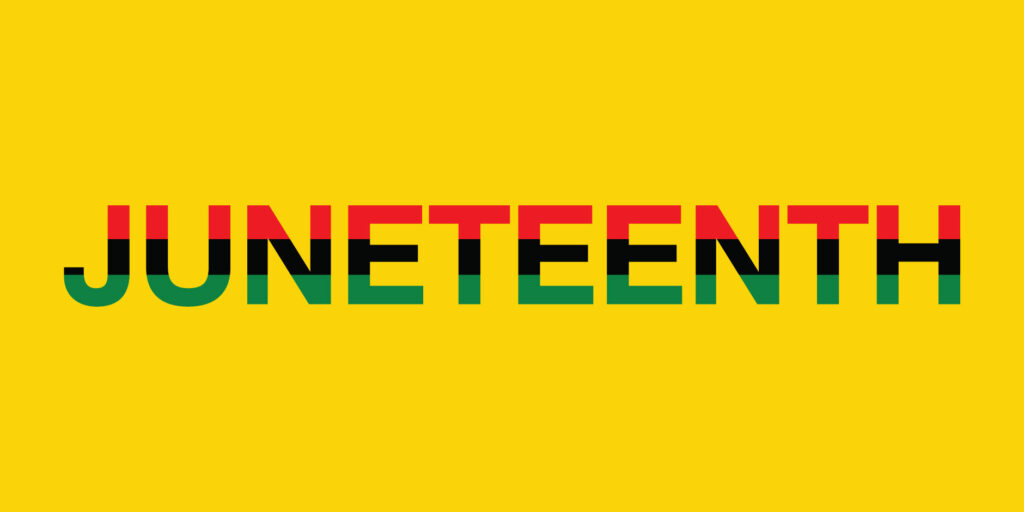
Today is Juneteenth, a day that commemorates the anniversary of June 19th, 1865, two years after Abraham Lincoln freed the slaves in his Emancipation Proclamation decree.
The news did not get to the slaves in the western most state of Texas until two years later.
The freed people celebrated that announcement in opposition to oppression in a holiday called Manumission Day, named after the act of an owner freeing their captives, but later the month June and the number 19 became mixed into what’s known now as Juneteenth.
Admittedly, although m familiar with the day, I have not celebrated it until this year as the United States past and continued racial divide dominates the headlines and thrust awareness of Juneteenth into the limelight in a big way for the first time this year. I was particularly excited, as a person who immigrated from West Africa, to learn that the foods eaten on this day have roots in African traditions of Nigeria, Ghana, Togo, Benin and the Congo:
Red foods and drinks were a major way of commemorating that legacy of enslavement and the holiday. But “the practice of eating red foods—red cake, barbecue, punch and fruit—may owe its existence to the enslaved Yoruba and Kongo brought to Texas in the 19th century,” from present-day Nigeria, Ghana, Togo, Benin, and the Democratic Republic of Congo, writes culinary historian and food writer Michael Twitty in his blog Afroculinaria.
Juneteenth celebrations originated in Texas. On June 19, 1865, Union General Gordon Granger issued an order declaring: “The people of Texas are informed that, in accordance with a proclamation from the Executive of the United States, all slaves are free…” This was two-and-a-half years after President Lincoln decreed the Emancipation Proclamation, which declared enslaved people in rebel states were free, but was only practical to those close to Union territory.
For a long time, formerly enslaved people in Texas did not know they were free, and even after they knew, they faced lynchings, rape, and other continued acts of forced labor. But that didn’t stop freed people from celebrating the June 19 announcement, in opposition to the systems of white oppression. This holiday became known initially as Manumission Day, named after the act of an owner freeing their captives, but later the month June and the number 19 became mixed into what’s known now as Juneteenth.
Red foods and drinks were a major way of commemorating that legacy of enslavement and the holiday. But “the practice of eating red foods—red cake, barbecue, punch and fruit—may owe its existence to the enslaved Yoruba and Kongo brought to Texas in the 19th century,” from present-day Nigeria, Ghana, Togo, Benin, and the Democratic Republic of Congo, writes culinary historian and food writer Michael Twitty in his blog Afroculinaria.
Twitty goes on to write, “enslavement narratives from Texas recall an African ancestor being lured using red flannel cloth, and many of the charms and power objects used to manipulate invisible forces required a red handkerchief.”
Professor of history and foodways at Babson College Fred Opie writes that some historians believe the red color could be connected to “the Asante and Yoruba’s special occasions which included offering up the blood of animals (especially the red blood of white birds and white goats) to their ancestors and gods.”
Red, in many West African cultures, is a symbol of strength, spirituality, and life and death. It’s possible this cultural legacy along with these groups’ distinct food knowledge of okra, beans, melons, and many other food groupings—some red, some not—was brought across the Atlantic.
The story is clearer when it comes to drinks. According to culinary historian Adrian Miller, red drinks at Juneteenth celebrations have links to the fruits of two native West African plants: the kola nut and hibiscus. The kola nut, typically white or red, was and still is served to guests as a snack to chew, used as a water purifier, or steeped for tea. The flowers of the hibiscus, too, were often stewed to make a reddish-purple tea called bissap and provided to guests. Both were extracted to the Caribbean and the Americas during the Atlantic slave trade. From watching their captives, plantation owners noticed that the kola nut could be used as an energy booster, digestive, or cold remedy, and made for a stimulating additive to bitter water.
When crushed into a powder, then added into water, the kola nut creates a reddish-brown refreshing drink. Miller also notes that enslaved people used red corn, after a long day of corn shucking, to make their own whiskey. This practice of adding reddish substances to make sweet, palatable drinks was common, so it wasn’t out of the ordinary to see such drinks associated with Juneteenth.


